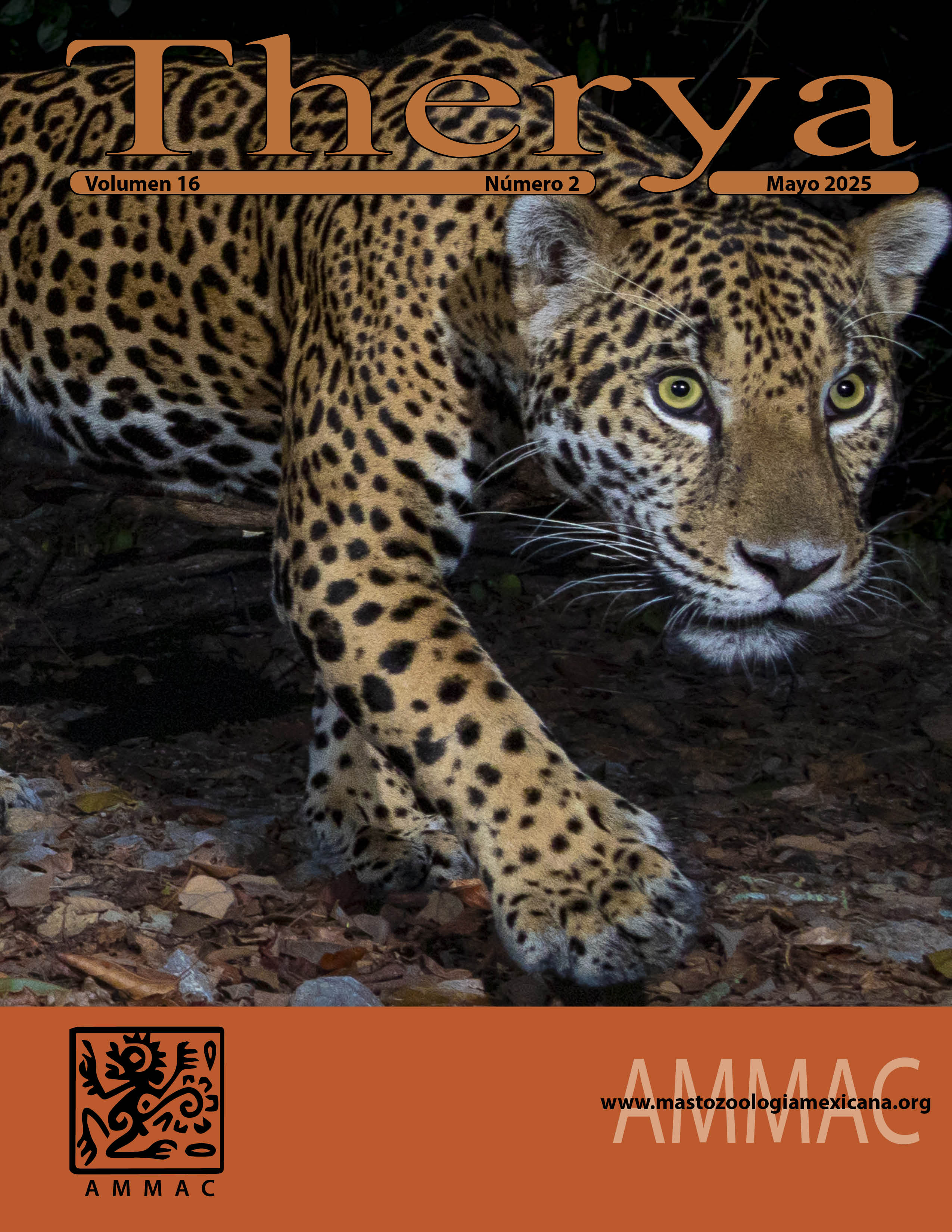Molecular sexing and sex ratio of the neotropical otter (Lontra longicaudis annectens) using non-invasive samples from the Porce III Reservoir, Colombia
Keywords:
non-invasive sampling, río Porce, sex ratios, Antioquia, SRY, ZFX/ZFYAbstract
The Neotropical otter is an important mammal in aquatic ecosystems due to its trophic position as a top predator, therefore is a valuable medium and long term bio monitor of the environment. Due to its crepuscular-nocturnal behavior, studies on this species primarily rely on non invasive methods, such as the analysis of feces and anal-glands jellies, which allow for various ecological and population inferences. With recent advances in molecular techniques, these non-invasive samples have greatly contributed to the understanding of wild populations. Among the relevant population characteristics that might be obtained are individual identification and molecular sexing, which provide key information about demography, kinship relations, permanence, and sex-biased dispersal. This study implemented a molecular sexing methodology using DNA extracted from fresh feces and mucous of Neotropical otters, with the aim of determining the sex ratio in the otter population in a reservoir in northeastern Antioquia, Colombia. The study was conducted in the Porce III reservoir and its main tributaries. Fresh feces and anal gland jelly from Neotropical otters were collected, DNA was extracted for genotyping. A total of 145 successfully genotyped samples were further amplified using two DNA segments: one homologous to the Y chromosome and another homologous to both sex chromosomes. The amplification products were separated on 3% agarose gels. Sex was successfully determined in 91 samples, corresponding to 40 individuals:
18 males and 22 females, with an average ratio of 2 females for every 1.4 males. A higher presence of females was found in the reservoir, while more males were detected in the tributaries. Females showed a higher recapture rate and lower mobility compared to males. The methodology used proved to be efficient for sex determination without the need to capture individuals. The results are consistent with previous studies suggesting greater female permanence. The information obtained is crucial for the management and conservation of the species, particularly in areas impacted by human activities.
Downloads
Downloads
Additional Files
Published
How to Cite
Issue
Section
License
THERYA is based on its open access policy allowing free download of the complete contents of the magazine in digital format. It also authorizes the author to place the article in the format published by the magazine on your personal website, or in an open access repository, distribute copies of the article published in electronic or printed format that the author deems appropriate, and reuse part or whole article in own articles or future books, giving the corresponding credits.










